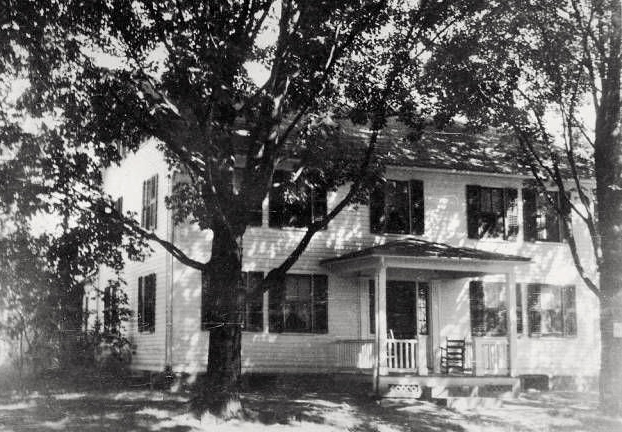Thank you to the Bloomfield Journal for letting us reprint this third article in a series published in Volume 32, Issue 43
Friday, October 24, 2008
Can you answer these Trivia Questions about Bloomfield?
1. Who donated the land that became Penwood State Park?
2. What is the bedrock under most of Bloomfield?
3. What organization controlled the schools in Wintonbury?
4. What Kaman product was used by Charlie Byrd, Neil Diamond, Gabor Szabo and John McLaughlin?
5. A _____ ____ is to a drummer as a Stradivarius is to a violinist, according to the Hartford Times.
GILLET OR GILLETT OR GILLETTE?
The above names have been prominent in the history of Wintonbury/Bloomfield from its earliest times. And even today we see the name – Gillette Ridge, for example. In the eighteenth century the name was sometimes spelled Gillet, and sometimes Gillett, and, in the 1850s, the family went back to the original French spelling, Gillette. Abel, Cornelius and Jonathan Gillet were among the petitioners who requested ‘parish privileges’ which led to the formation of Wintonbury Parish in 1738.
The Gillets and the Hubbards were both prominent families in the Congregational Church. Abel Gillet was a farmer with about 200 acres of land where St. Thomas Seminary is now located and stretching eastward. About 1760, the Gillets and the Hubbards had a feud, the nature of which is not entirely clear today. Abel led a group away from the church to start a new one that took the name ‘Separatists’, then ‘Separatist-Baptist’, and finally abbreviated to Baptist. Son Ashbel became its first minister. He was reputed to have so much influence with the Almighty that in times of drought, it was useless to pray for rain until the parson’s hay was in.
Cottage Grove Road was called Gillette Street in the 19th century because several members of the family had built houses along this road. One that remains is the 1800 Jonathan Keyes Gillett home that is on Bloom Hill Farm.  Directly across the street, Captain Amos Gillett built his house that is no longer standing. A private dirt road there leads to Wash Brook where Amos in 1780 built a gristmill that he and subsequent members of the family operated until 1865. All traces of the mill have been washed away by floods.
Directly across the street, Captain Amos Gillett built his house that is no longer standing. A private dirt road there leads to Wash Brook where Amos in 1780 built a gristmill that he and subsequent members of the family operated until 1865. All traces of the mill have been washed away by floods.
Ashbel Gillet had a large family. The eldest, Francis, was probably the most prominent in local and state history. He was a farmer, educator, temperance advocate and political figure. He aided in the formation of the Republican Party. He served in the Connecticut legislature and was appointed to fill the term of a U.S. Senator who had resigned. He built a trap rock house in 1834 on Bloomfield Avenue that became a station on the underground railroad before the Civil War. The house was subsequently moved by Connecticut General to another location farther north and nearer the road. It was put on the National Register of Historic Places in 1982.
His strong opinion against liquor was linked to the naming of The America Temperance Life Insurance Company in his role as an incorporator. When the temperance movement influence subsided, the name became Phoenix Mutual.
In the 1850s, he moved his family to Hartford and built a house on what is now called Gillette Street. His youngest son, William, became interested in the stage, a vocation his father frowned upon. But a friend and neighbor, Samuel Clemens, persuaded his father to allow him to pursue his dreams. William went on to become a very successful playwright and actor, best known for his role of Sherlock Holmes. He built the castle on the Connecticut River at Hadlyme that is now the centerpiece of a Connecticut State Park.
And finally, it was Francis Gillet (now Gillette) who, recalling the flowering meadows of his father’s farm, came up with the name Bloomfield when Wintonbury was incorporated as a town in 1834
by Ralph Schmoll
Wintonbury Historical Society
ANSWERS TO TRIVIA QUESTIONS
1. Curtis H. Veeder of Veeder-Root
2. Sandstone
3. The Ecclesiastical Society at the Congregational Church
4. Ovation guitar
5. A Brown Drum